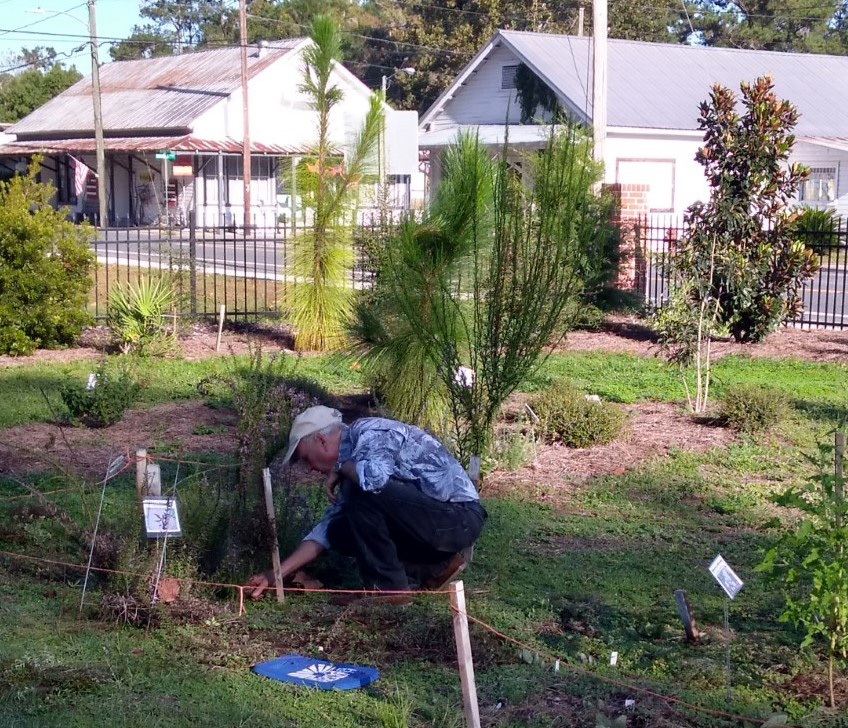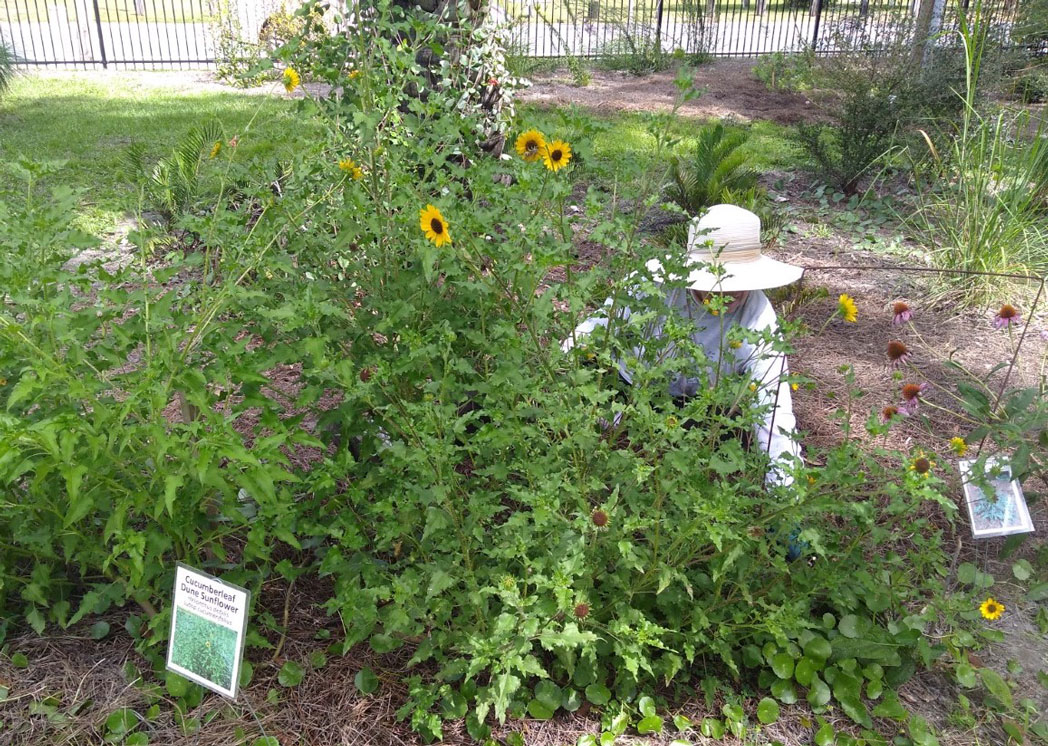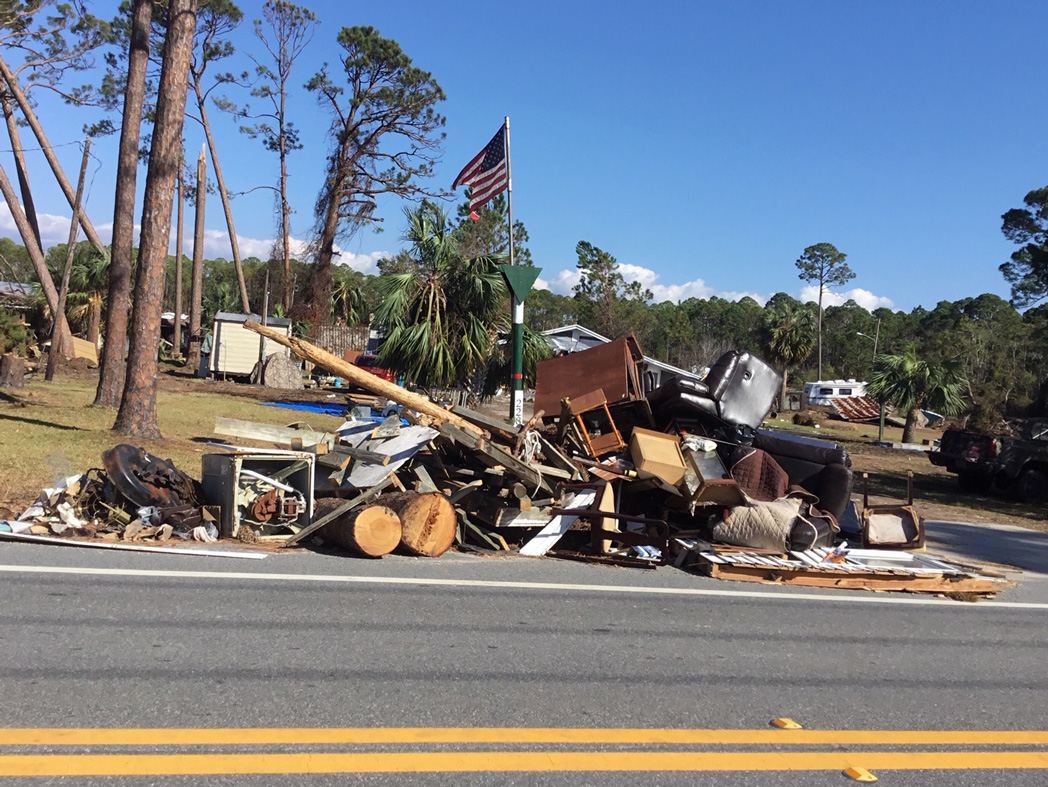Fall news from PWA counties
Refreshed Panhandle wildflower guides are here
The Florida Wildflower Foundation recently published an updated Panhandle Wildflowers brochure. The refreshed publication features a new cover design, an updated map of wildflower hotspots and 40 photos of common wildflowers found in 16 Panhandle counties, from Escambia to Jefferson. The brochure, available at Florida Welcome Centers, has been popular with both visitors and residents — more than 130,000 copies have been distributed.
Download the brochure, or pick up a copy at a Florida Welcome Center. To receive copies to distribute at an event or meeting, call the Florida Wildflower Foundation at 407-622-1606, or email info@flawildflowers.org.
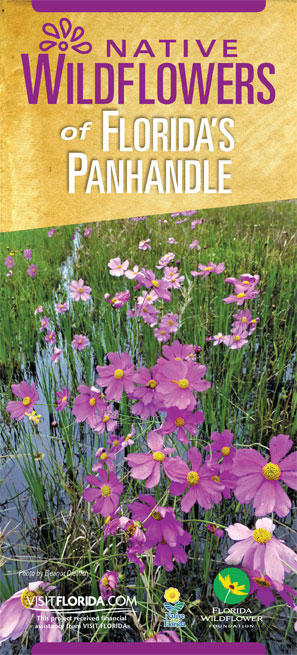
Seeking volunteer leaders in 4 counties
Bay, Holmes, Okaloosa and Walton counties need leaders to help coordinate the Panhandle Wildflower Alliance’s efforts to create pollinator pathways of native wildflowers. If you are interested in volunteering, please call Liz Sparks, Florida Wildflower Foundation FDOT/PWA liaison, at 850-570-5950 for more information.
FDOT District 3 designates I-10 medians as restoration sites
FDOT District 3 has designated about 90 acres of medians between the Sneads and Grand Ridge exits on Interstate 10 as native plant restoration sites in response to damaged caused by the clearing of hurricane debris last winter.
Because there is little appropriate seed available commercially, FDOT Vegetative Management Specialist Bob Farley is identifying sites, both wetland and upland, with significant local wildflower sites, from which he’ll be collecting seeds for dispersal. So far, seeds of Whiteleaf mountainmint (Pycnanthemum albescens), Softhair coneflower (Rudbeckia mollis), Browneyed Susan (Rudbeckia triloba),Pinnate prairie coneflower (Ratibida pinnata), Tall ironweed (Vernonia angustifolia) and Joe pye weed (Eupatorium fistulosum) have been collected.
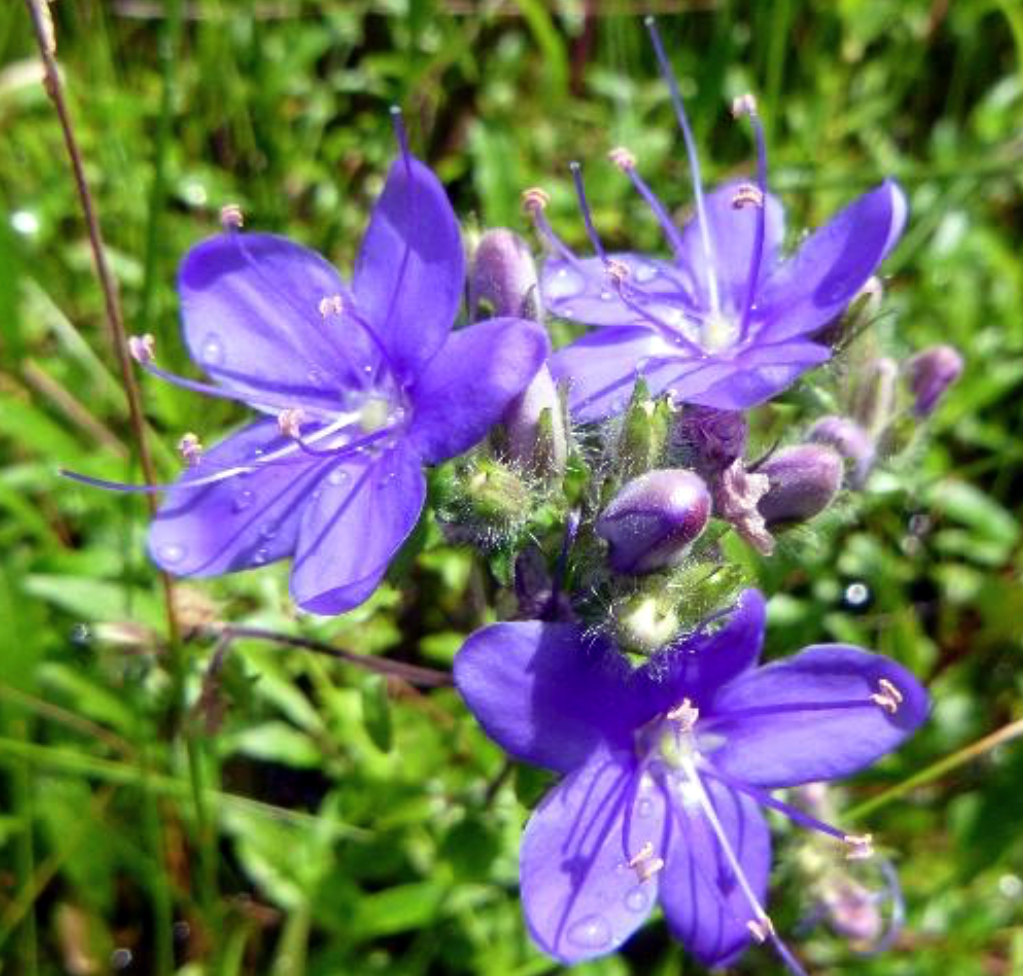
Farley is also monitoring a population of Rattlesnakemaster (Eryngium aquaticum) and Skyflower (Hydrolea corymbosa) for ripening seed. He will collect and process seed throughout the fall as appropriate species come into season.
Calhoun County will beautify Blountstown
Donations collected by Florida Wildflower Foundation and Florida Native Plant Society members at the North Florida Wildflower Festival in April, along with a donation made by the Magnolia Chapter, FNPS, are being used to install native plant gardens in Blountstown, Calhoun County. Pollinator plants will replace two aging rose planters in highly visible locations on the town square, and a large bed of native shrubs and wildflowers will be installed next to a popular playground and trailhead of the Blountstown Greenway.
Volunteers from Blountstown High School’s Future Farmers of America chapter, 4-H Club and others will install the plants from 9 a.m. to noon on Saturday, Nov. 23, during a Beautify Blountstown event. Rayanne Mitchell of the Magnolia Chapter also is working with the FFA chapter to install native trees at the high school campus so students can use them to prepare for forestry competitions. Bob Farley volunteered his expertise to develop the garden design.
Volunteers are welcome to join in the planting effort. Arrive at 9 a.m. CST at the Blountstown Greenway trailhead. Breakfast will be provided. Call Liz Sparks at 850-570-5950 for more information.
Hard-hit Gulf County roadsides are recovering
Text and photo by Nancy Jones
In fall 2018, Gulf County was hit hard by Hurricane Michael. The widespread damage resulted in the loss of homes, trees, landscaping and basic infrastructure for many communities. As trees were cut up and moved to roadsides for pickup, the wood joined piles of building debris already there. In some cases, whole structures were taken apart and deposited on roadsides, where debris awaited pickup for months.
Our hard-hit pine trees didn’t have fall cones for the squirrels, and when the Gulf fritillary butterflies arrived in October and the Monarchs in November, there was no roadside vegetation on which to feast.
Now roadsides are debris-free and covered in Spanish needles (Bidens alba), a ready meal for early arriving Gulf fritillaries. The hurricane’s winds also spread the seeds of many new and familiar plants. Gulf County roadways now hold stands of both native and non-native Sesbania species. The non-native species, Sesbania punicea, has a red bloom. It also is called Spanish gold, rattlebox or purple Sesban. Unfortunately, this plant is an invasive ornamental originally from South America. We also have a yellow-blooming native species called Danglepod or Hemp Sesbania (Sesbania herbacea). It has spread aggressively since the hurricane.
Desirable native plants were dispersed by Hurricane Michael, as well. I am the lucky recipient of many beautiful Blanketflower (Gaillardia pulchella) plants in my yard. I hope this wonderful coastal plant spreads to other places for others to enjoy.
Santa Rosa pitcherplants recover from unauthorized mowing
Text and photos by Suzanne Spencer
Santa Rosa County is home to the largest community of pitcherplants in the state. The Yellow River Marsh Preserve protects one of Florida’s last remaining tracts of wet prairie where populations of several Sarracenia species can be found. The state-endangered Whitetop pitcherplant (Sarracenia leucophylla) grows in abundance along Dickerson City Road within the Preserve. Most of this road is managed under the Santa Rosa County Roadside Wildflower Program with a reduced and selective mowing regime.
This area suffered a setback when an unauthorized mowing occurred in April. Several factors led to this disappointing action, but the problems have been addressed to the satisfaction of all parties. We learned that it is crucial for Wildflower Area signs to remain in place throughout the year and that communication with mowing crew members about the meaning of the signs be consistent and ongoing.
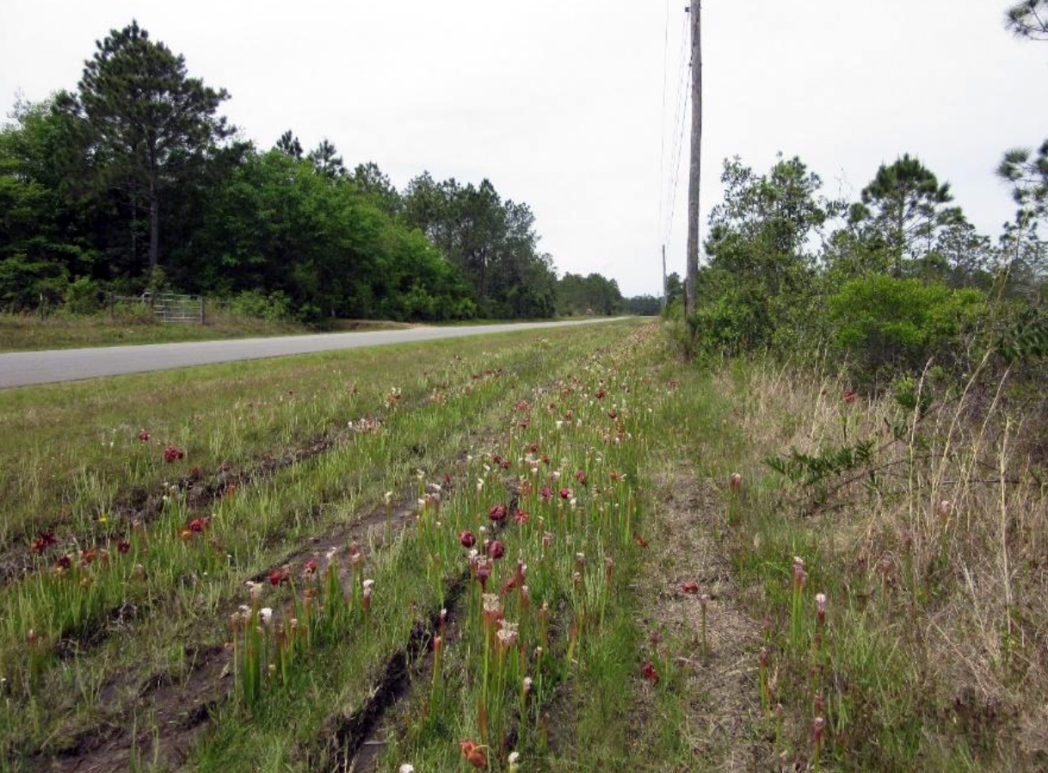
It has been interesting to observe the recovery of the pitcherplants since the April mowing. It was understood at the time that the plants were not destroyed, as they had been surviving for many years while undergoing regular mowing. As a species found in fire-maintained plant communities, pitcherplants benefit from fire, which reduces competition from other plant species. Mowing can simulate fire because it, too, reduces competition. Given time, the plants make a good comeback after fires and mowing, as can be seen in these photos. The unauthorized mowing actually provided a means to observe this predicted recovery sequence.
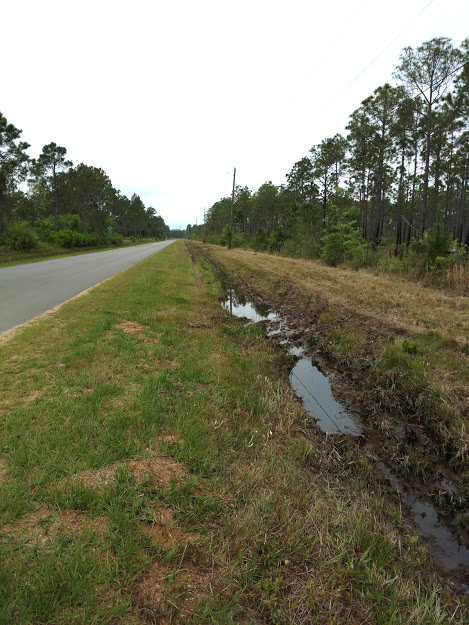
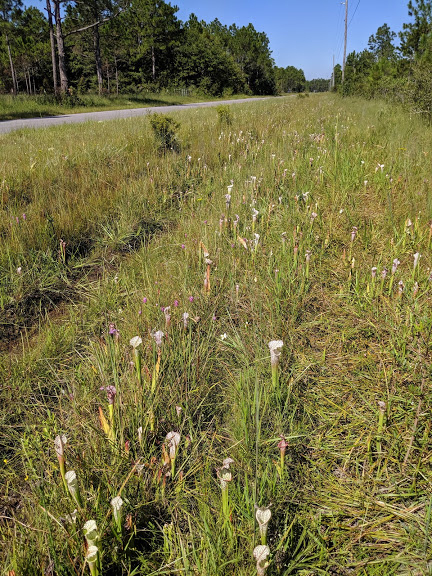
To further public awareness of the cooperative wildflower conservation mowing effort with Santa Rosa County, FDOT, the UF/IFAS Extension and the Florida Wildflower Foundation, Mary Salinas and I created a banner with the assistance of UF/IFAS Communications. We plan to use this pop-up display (78 inches tall and 34 inches wide) for our outreach programs and hopefully to display it in the entryway at the main county office. The Santa Rosa County Master Gardeners provided funding to purchase two displays.
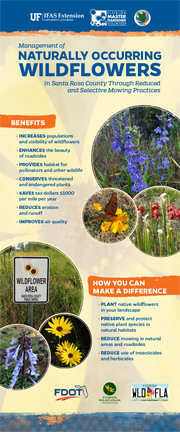
Wakulla County: Volunteers needed to plant wildflowers
Text and photos by Lynn Artz
It’s been almost a year since Sopchoppy’s Depot Park was landscaped with more than 600 native trees, shrubs, vines, grasses and wildflowers. Several wildflower species not found in nurseries were grown from seed and gradually added to the park. Volunteers have spent the summer weeding the wildflower beds and watering when needed.
Additional wildflower plants are on order or have been sprouted from locally collected seeds and await planting in Depot Park in early November. Gardening volunteers are needed beginning at 9 a. m. on Saturday, Nov. 2 and Saturday, Nov. 9, to help plant more native wildflowers in this charming park.
